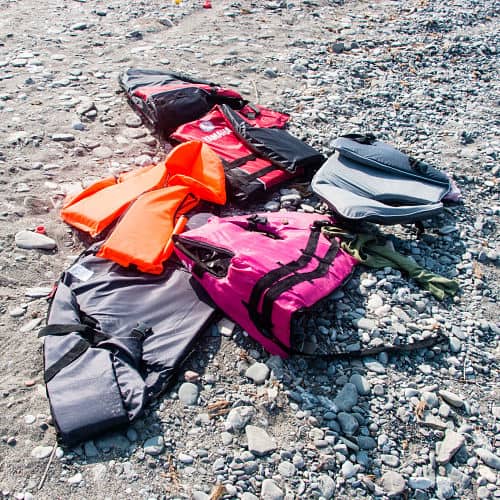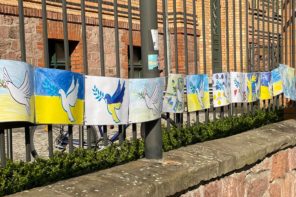In the second of three questions, human smuggling experts share their views on what actually constitutes the difference between human smuggling and trafficking. They all agree that the conflation of smuggling and trafficking de-politicises the context in which human smuggling occur and ultimately fail to understand the root-causes of human smuggling.
Question 2: Media, academic and policy circles suggest that human smuggling is a gateway into human trafficking. Many times both terms are used interchangeably. Does your work provide any insight into these phenomena and what does that say about Migration?
Kyunghee Kook
Kyunghee Kookis a PhD candidate in sociology, University of Bristol. She is primarily interested in mobility, smuggling, trafficking and human rights.

However, the discourse on “human trafficking” arguably over-generalises North Koreans’ migration. In this respect, there is empirical evidence on North Koreans’ mobility that destabilizes the ‘fixed’ concept of trafficking. My research data reveals their experience of exploitation and abuse ranges along a continuum, with some North Korean escapees experiencing precarious but not violent conditions, and managing to live in China and remit money home. My findings reveal therefore dimensions of what has been conceptualized as both human smuggling and trafficking. The majority of North Korean women view ‘traffickers’ are those who are not honest or trustworthy ‘smugglers’ or ‘brokers’. The distinction between what is termed human ‘smuggling’ and ‘trafficking’ is ambiguous: being ‘smuggled’ does not necessarily mean the absence of victimization. The focus on the smuggling/trafficking distinction only serves the interest to states looking to determine who to punish, regardless of it being the ‘victim’ or the ‘perpetrator’.
Ilse van Liempt
Dr Ilse van Liempt works as an assistant professor in the Human Geography Department of Utrecht University. She conducted her PhD research on human smuggling towards the Netherlands in 2007 at the Institute for Ethnic and Migration Studies at the University of Amsterdam.

Nassim Majidi
Nassim Majidi is an Associate Doctor at Sciences Po’s CERI, as well as the Co-Founder of Samuel Hall where she heads the Migration Practice and specialises in field-based research on migration and displacement in Central/South Asia and East Africa.

The tactics used by smugglers have evolved over time. In 2008, they started providing a “one-for-three” package for Afghans wanting to enter Iran to find work: they would ensure, at a given price, three re-entry attempts. The Iranian government had stepped up policing at the border, making it harder for Afghans to enter illegally. So they adapted and provided a service that took into account the probability of failure before success.
Increasingly, smugglers offer services to Europe. These include meeting with families and relatives in the location of origin to explain the process and requirements of migration, including the lack of guaranteed success. They then offer migrants a choice of various routes, with longer travels stopping in Turkey, Greece and other countries where migrants can work to pay their journey, either on construction sites or in restaurants. As a third step, they match migrants from one location to ensure that they can build on common experiences and identities, to strengthen migrant’s ability to ‘make it to the end’ with some source of social and cultural support when times get tough during the journey. As a result, the smuggler is not just a “travel agent”, as they often describe themselves.
In 2015, smugglers adapted again. Given the tightened border controls on the way to and within Europe, some migrants only have to pay if they make it to the final destination. The money is held by the family and released only if the final destination is reached. This is a new modus operandi that is more constraining for the smugglers than for the migrants. Now this is a far cry from the images of bonded labour and trafficking where consent is absent, terms are fraudulent, or agreed upon under coercion.
In Afghanistan, the confusion and conflation of smuggling and trafficking as terms are constant. The government will use the word trafficking when speaking of smuggling. The terminology reveals the accent is put on the criminal nature of smuggling and the political intent is to stop Afghan nationals from fleeing their country – whereas it is also a safety valve for them. Smuggling and trafficking are used interchangeably in Afghanistan, betraying a legal blur between the two. In the official language, Dari, there is one word for both terms: ghachag-e insan. Additionally, the word ghachag is used commonly to refer to all types of illegal transport, be it of drugs, arms, or persons. National legislation, in contrast, must be more precise in order to be enforceable. A Samuel Hall / IOM research project from 2013 emphasised the use the term tejarat-e insan (human trade) to refer specifically to trafficking, and set it apart from smuggling.
Sarnata Reynolds
Sarnata Reynolds is an international human rights attorney who is an expert on refugee and migrant issues, statelessness and the right to nationality, and the documentation of human rights violations and humanitarian needs among displaced populations.

By the early 1990s, Bangladesh had criminalised and terrified Rohingya refugees, so when new Myanmar government purges occurred, tens of thousands of Rohingya fled further afield to Thailand and Malaysia. Because the Rohingya were (and continue to be) stateless, they had no formal identification documents and needed the assistance of smugglers to pass through regions and states that required documentation to enter. The lack of any legal record certainly made them vulnerable to trafficking, and all but assured their reliance on smugglers.
In mid-2015, when the world watched thousands of Rohingya stranded on boats and dying in the Andaman Sea, most thought they were witnessing a trafficking crisis unfold, but for too many Rohingya, this was not the case. Indeed, there was nothing new about the miserable boat passage for the Rohingya, except perhaps the number of people who undertook the journey in 2015. The Rohingya had been enduring life-threatening boat passages for at least ten years, and they did not need to be tricked into it. Many of the Rohingya I spoke with in Myanmar and Malaysia had expected a treacherous journey and intended to pay back the cost of their passage upon arrival in Malaysia through work that would be arranged by the smuggler. It cannot be said that they were all being trafficked, although the circumstances under which they ultimately travelled and were held may have transformed their situation into one of trafficking. Many of the Bangladeshi people on the boats likely were the victims of trafficking, but the complexity of their situation cannot be adequately addressed in this short form.
Regardless, by describing the situation of the Rohingya as trafficking rather than smuggling, governments, advocates and the media enabled Myanmar to claim that the situation on the Andaman Sea was an issue of law and order, rather than persecution and ethnic cleansing. While this assertion was ultimately challenged, the unilateral and regional responses of nations in the region focused on a law enforcement crackdown that did nothing to promote or protect the rights of the Rohingya.
Theodore Baird
Theodore Baird is a post-doc researcher at the Free University Amsterdam. He currently researches the privatization of border security as part of the Human Costs of Border Control project, available here: borderdeaths.org.

Yaatsil Guevara González
Yaatsil Guevara González, Doctoral Researcher reads for a PhD in Sociology at the Bielefeld Graduate School in History and Sociology. Her current research examines everyday life experiences of refugees and undocumented migrants during immobility phases in Mexico’s southern border.

Negotiations and power relationships are part of human smuggling, and although coyotes point out the ‘rituals’ and ‘rules’ to be followed by migrants, a two- way relationship is built between them that is constantly transforming for the better or worse depending on the situation. Of course, using smuggling services sometimes can lead to human trafficking: social and cultural conditions in borderlands create spaces and ‘states’ where human trafficking and smuggling networks entangle, due to the precarious and clandestine nature of the migratory system.
For example, if something goes wrong with the smuggler services on the borderland, migrants will have to face precarious work conditions, fragile legal status, and unequal power relations. In such a scenario they will be constantly confronted by uncertain and unstable status, as well as exclusion and mistreatment by the social structures. In Tenosique, Mexico, I frequently observed that, after a couple of weeks of looking for a job, women were pressured to join networks of sex work and drug trafficking – the most frequently available jobs in the area.
Interested in more? Here are the answers to question 1 (Are smugglers parasites or service providers?) and here are the answers to question 3 (Is human smuggling the province of organised crime?).
Access the Human Smugglers Roundtable and the complete answers of all participants here.
Featured image by Ann Wuyts (flickr, CC BY 2.0)









